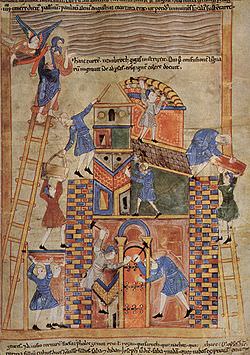Narratives of the saintly body in Anglo-Saxon England
Marianne Alicia Malo Chenard
Doctor of Philosophy, University of Notre Dame, Department of English, Indiana, December (2003)
Abstract
This dissertation investigates narratives of the saintly body in Anglo-Saxon England that were written between the late seventh century and the late tenth century. Specifically, it examines the ways in which the bodies of holy men and women were constructed through these narratives, and read in local appropriations of emblematic vitae and passiones. The saints depicted in these accounts—to whatever extent these narratives rewrote biblical, exegetical, or hagiographic texts—illustrate various manifestations of sanctity. Indeed, sanctity itself is a mutable discourse, variously shaped from text to text in order to uphold other key discourses therein, such as those of chastity, Christian kingship, penitence, and reformed monasticism.
This mutability is made clear in the texts that this study analyzes: the Anglo-Latin Prosa de virginitate and Carmen de virginitate by Aldhelm and the Ecclesiastical History by Bede, as well as the anonymous Old English Martyrology and Ælfric’s Lives of Saints. In these works, the textualized body of the saint provides fertile ground for narrative constructions of sanctity, regardless of the genre in which that body figures: it is clear that the processes underlying these constructions are always inflected by the historical circumstances surrounding the production of the texts in which the saintly body is narrated.
Narratives of the saintly body in Anglo-Saxon England
Marianne Alicia Malo Chenard
Doctor of Philosophy, University of Notre Dame, Department of English, Indiana, December (2003)
Abstract
This dissertation investigates narratives of the saintly body in Anglo-Saxon England that were written between the late seventh century and the late tenth century. Specifically, it examines the ways in which the bodies of holy men and women were constructed through these narratives, and read in local appropriations of emblematic vitae and passiones. The saints depicted in these accounts—to whatever extent these narratives rewrote biblical, exegetical, or hagiographic texts—illustrate various manifestations of sanctity. Indeed, sanctity itself is a mutable discourse, variously shaped from text to text in order to uphold other key discourses therein, such as those of chastity, Christian kingship, penitence, and reformed monasticism.
This mutability is made clear in the texts that this study analyzes: the Anglo-Latin Prosa de virginitate and Carmen de virginitate by Aldhelm and the Ecclesiastical History by Bede, as well as the anonymous Old English Martyrology and Ælfric’s Lives of Saints. In these works, the textualized body of the saint provides fertile ground for narrative constructions of sanctity, regardless of the genre in which that body figures: it is clear that the processes underlying these constructions are always inflected by the historical circumstances surrounding the production of the texts in which the saintly body is narrated.
Click here to read this thesis from University of Notre Dame
Subscribe to Medievalverse
Related Posts